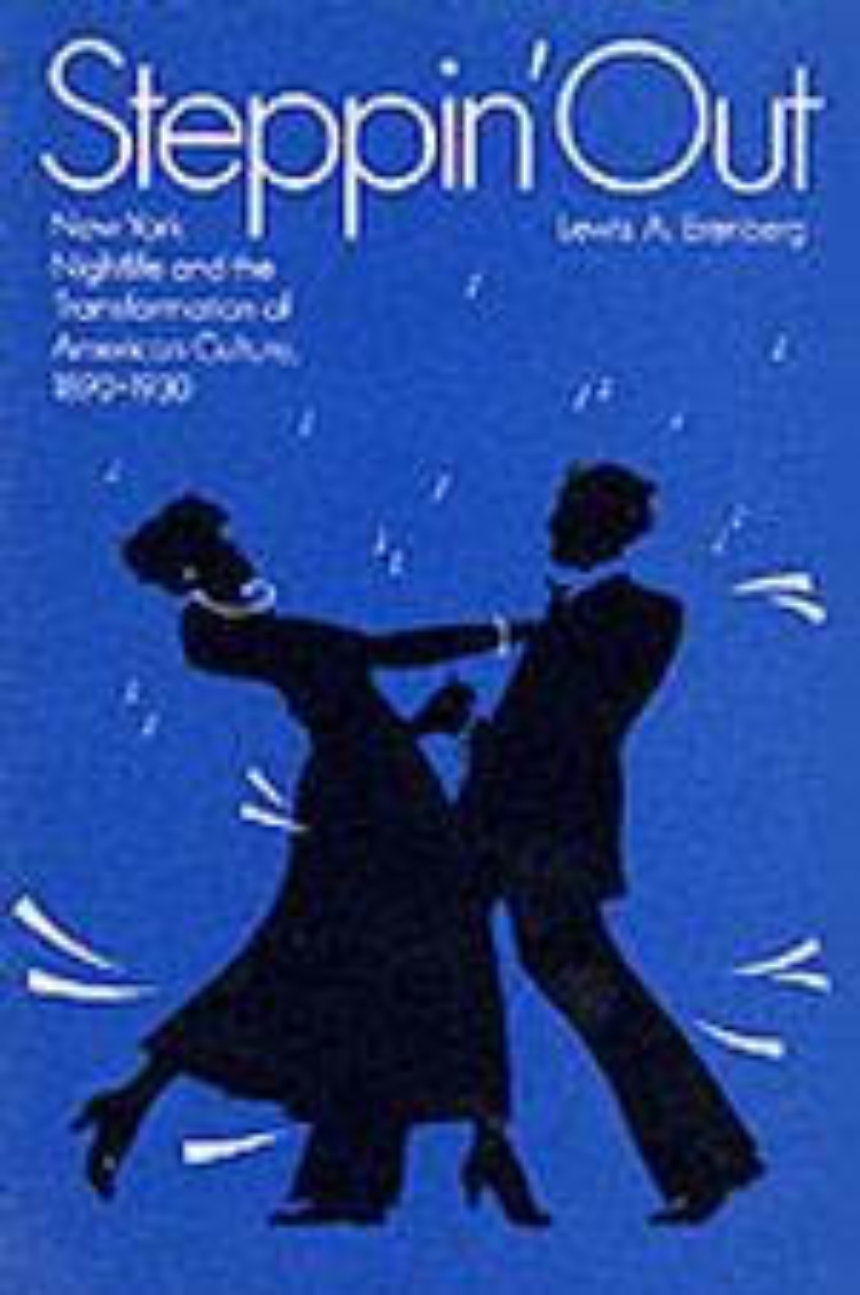Steppin’ Out
New York Nightlife and the Transformation of American Culture
The evolution of New York nightlife from the Gay Nineties through the Jazz Age was, as Lewis A. Erenberg shows, both symbol and catalyst of America’s transition out of the Victorian period. Cabaret culture led the way to new styles of behavior and consumption, dissolving conventional barriers between classes, races, the sexes—even between life and art. A fabulous era of chorus girls, jazz players, lobster palaces, and hip flasks—the age of Sophie Tucker, Irene and Vernon Castle, and Gilda Gray—tangos through the pages of this ground-breaking, as well as entertaining, cultural history.
Table of Contents
Illustrations and Table
Preface
Acknowledgments
Part One: A Victorian World
1. Victorian Culture and Amusements
Part Two: Breaking the Bonds
2. After the Ball: Hotels and Lobster Palaces, 1893-1912
3. Women Out of Control: Critics of the New Amusements
Part Three: The Cabaret and the Decline of Formalism
4. Action Environment: The Informal Structure of the Cabaret
5. Everybody’s Doin’ It: Irene and Vernon Castle and the Pre-World War I Dance Craze
6. Some of These Days: Sophie Tucker, the Friendly Entertainer
7. Broadway Babies: Glorifying the American Girl, 1915-1922
Part Four: The Fragmentation and Flowering of American Culture
8. Into the Jazz Age
Bibliographical Essay
Name Index
Index of Cabarets, Hotels and Theatres
Subject Index
Preface
Acknowledgments
Part One: A Victorian World
1. Victorian Culture and Amusements
Part Two: Breaking the Bonds
2. After the Ball: Hotels and Lobster Palaces, 1893-1912
3. Women Out of Control: Critics of the New Amusements
Part Three: The Cabaret and the Decline of Formalism
4. Action Environment: The Informal Structure of the Cabaret
5. Everybody’s Doin’ It: Irene and Vernon Castle and the Pre-World War I Dance Craze
6. Some of These Days: Sophie Tucker, the Friendly Entertainer
7. Broadway Babies: Glorifying the American Girl, 1915-1922
Part Four: The Fragmentation and Flowering of American Culture
8. Into the Jazz Age
Bibliographical Essay
Name Index
Index of Cabarets, Hotels and Theatres
Subject Index
